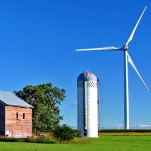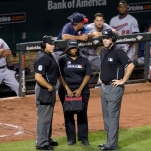Farmers With Flood-Damaged Crops Are Screwed, and the USDA Can't Help
There’s no federal program to help farmers who have lost millions of dollars of harvests due to flooding in the midwest over the last month. The Department of Agriculture has no plan to help them with these losses, and most of the crops lost were not insured, according to Reuters.
Last year, the USDA was able to help farmers who were hurt thanks to Trump’s trade war with a $12 billion stimulus package. This was done without Congressional approval. There are also programs that are meant to help farmers who have livestock killed in natural disasters, and who can’t plant crops because of the weather. There’s even a program to help remove things left in fields by flooding.
But the stocks of harvested food, mostly soybeans, that were destroyed in the historic floods are in a grey area. Congress would have to pass new legislation in order for farmers to receive aid for these losses.
“It’s not traditionally been covered,” Agriculture Under Secretary Bill Northey told Reuters. “But we’ve not usually had as many losses.”
Indigo Ag, an agriculture technology company, identified 832 on-farm storage bins within flooded Midwest areas. They hold an estimated 5 million to 10 million bushels of corn and soybeans — worth between $17.3 million and $34.6 million — that could have been damaged in the floods, the company told Reuters.
Across the United States, farmers held soybean stocks of 2.716 billion bushels as of March 1, the largest on record for the time period, the USDA said. Corn stocks were the third-largest on record.
Some in Congress are interested in writing legislation to farmers who lost their harvest in the floods, but that could be a long and difficult process, according to Sen. Chuck Grassley, who addressed farmers at a meeting in Iowa.
-

-

-

-

-

-

-

-

-

-

-

-

-

-

-

-

-

-

-

-

-

-

-

-

-

-

-

-

-

-

-

-

-

-

-

-

-

-

-

-

-

-

-

-

-

-

-

-

-

-

-

-

-

-

-

-

-

-

-

-

-

-

-

-

-

-

-

-

-

-

-

-

-

-

-

-

-

-

-

-

-

-

-

-

-

-

-

-

-

-

-

-

-

-

-

-

-

-

-

-

-

-

-

-

-

-

-

-












































































































